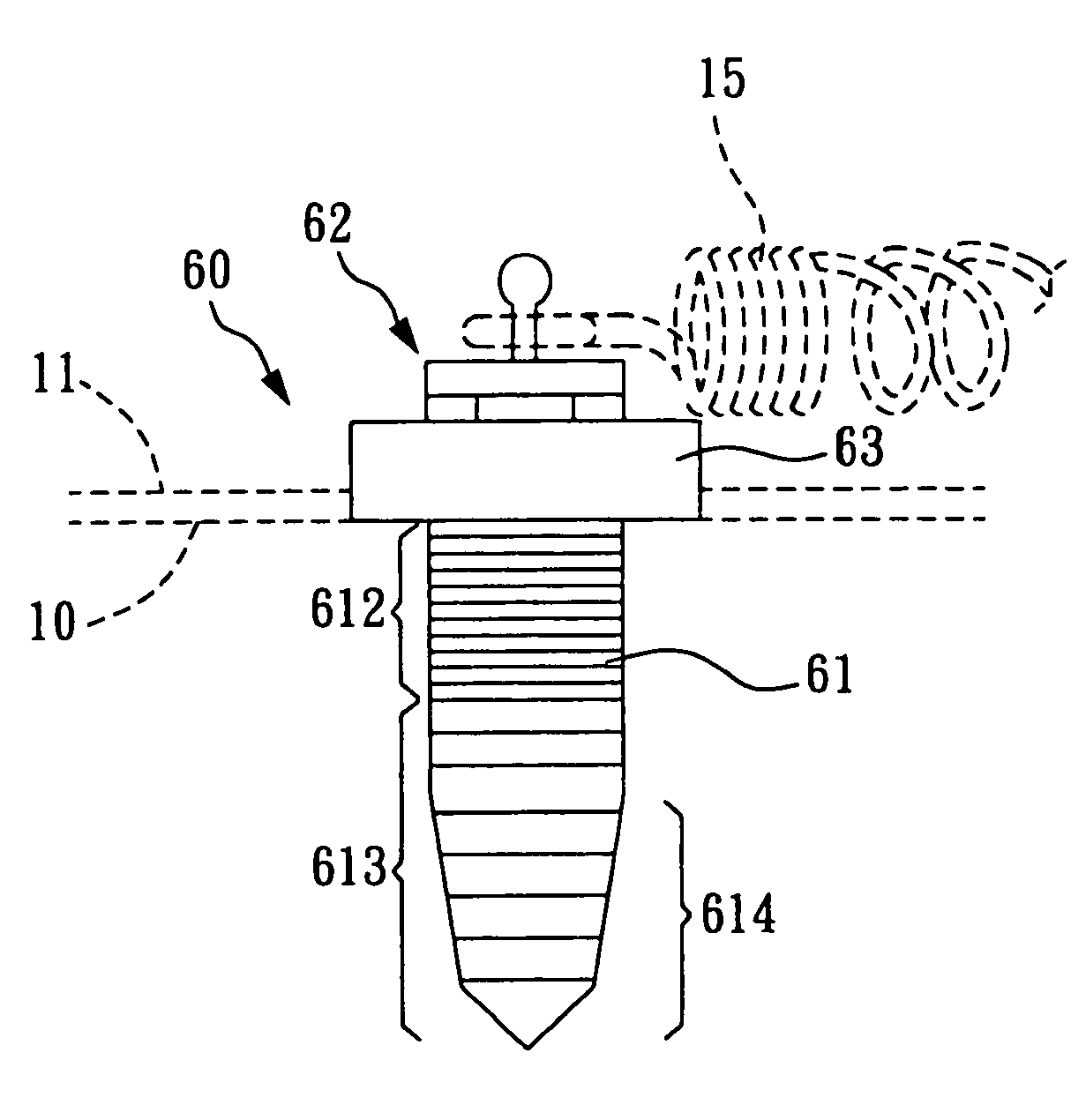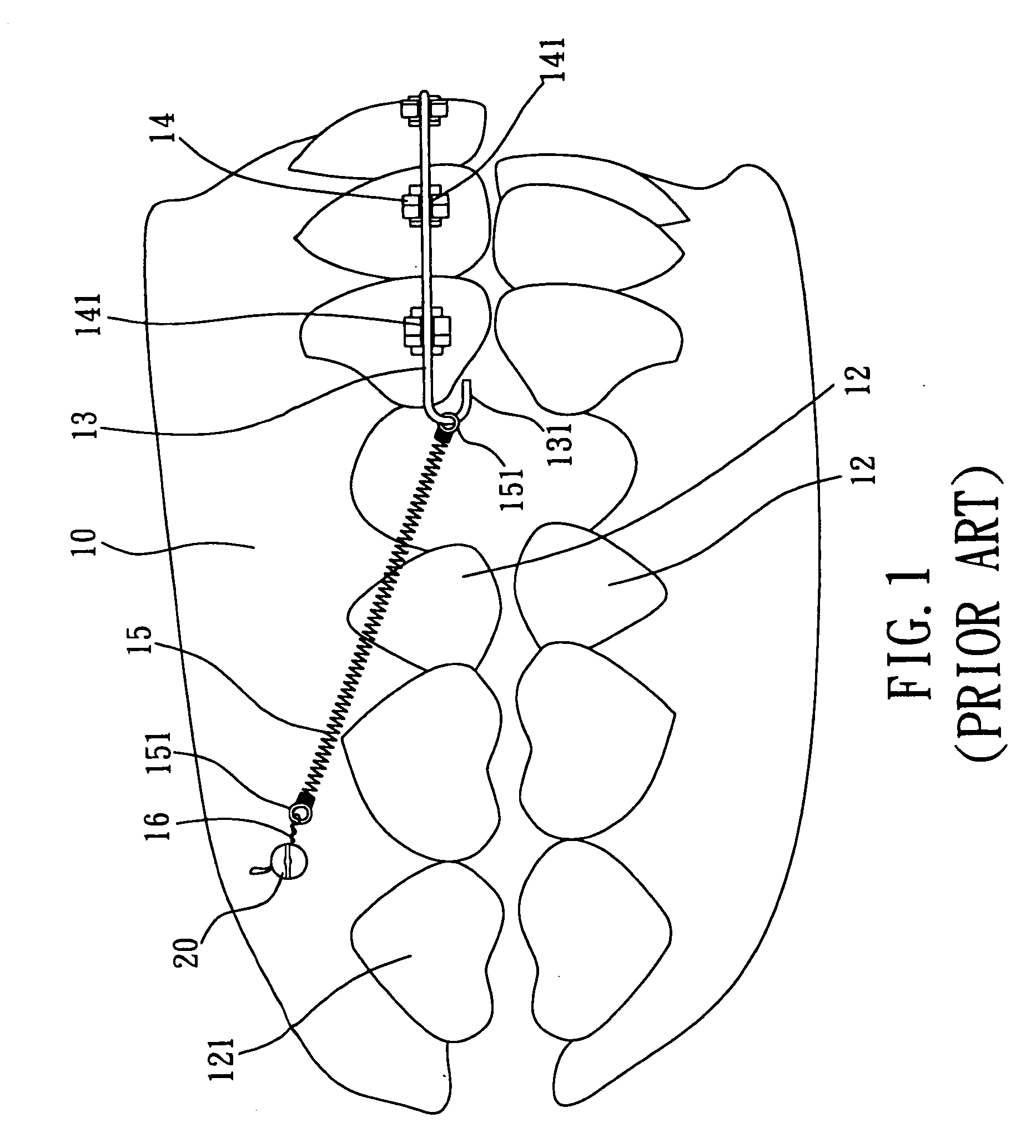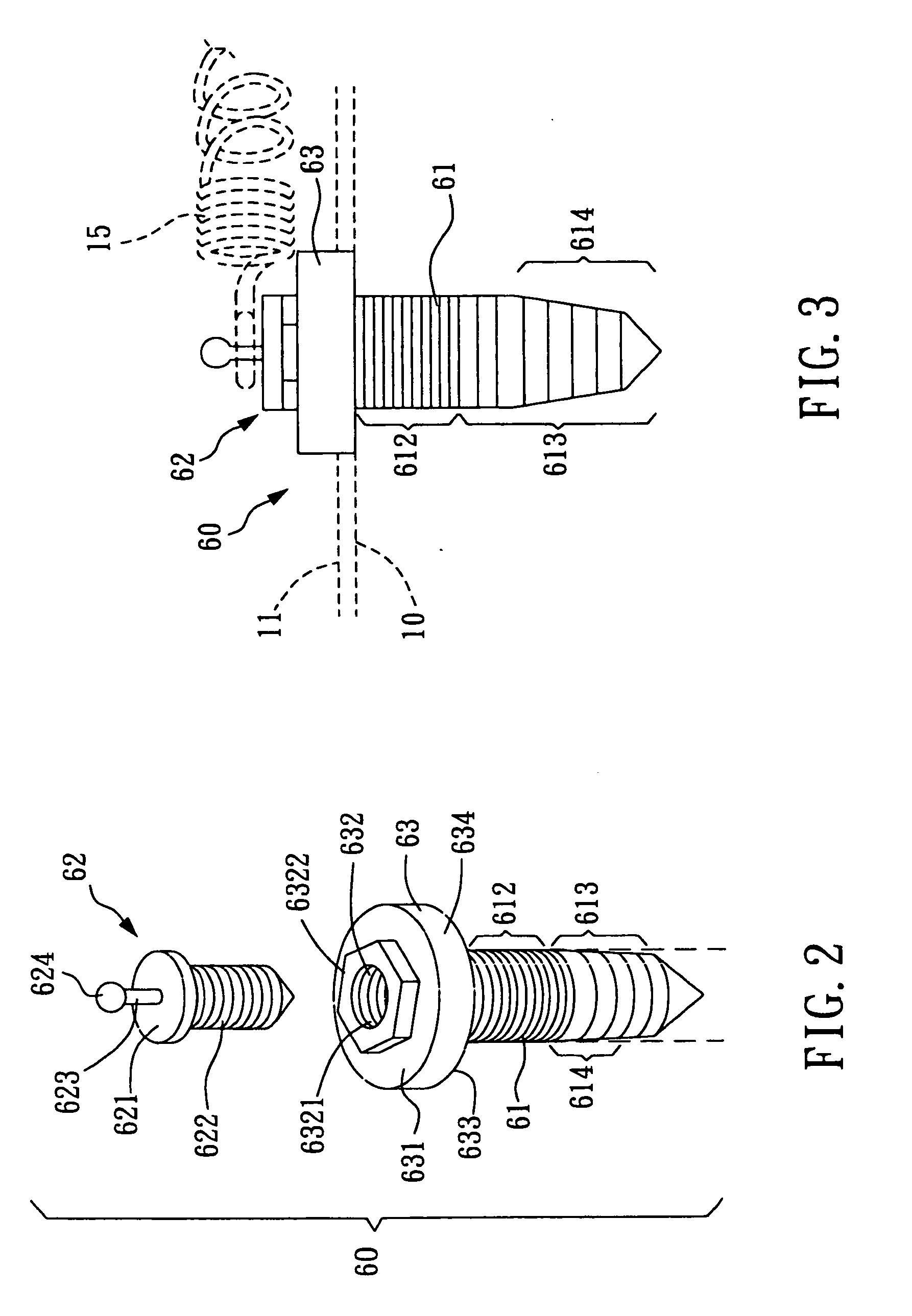Screw device for orthodontic treatment
a screw and orthodontic technology, applied in the field of screw devices for orthodontic treatment, can solve the problems of inability to provide the function of spring hooking, prone to loosening of fixtures, and prone to impingement of gingivals, etc., and achieve the effect of narrower width, wider width and smaller pitch
- Summary
- Abstract
- Description
- Claims
- Application Information
AI Technical Summary
Benefits of technology
Problems solved by technology
Method used
Image
Examples
Embodiment Construction
[0029] The elements described thereinafter, such as: maxilla (or mandible) 10, gingiva 11, tooth 12, orthodontic archwire 13, orthodontic bracket 14, and spring 15 (or rubber band) for orthodontic treatment etc., and their relative position arranged in the mouth are all similar to the prior arts shown in FIG. 1 and they are not the technical characteristics of the invention, so they will be given same element names and referential numbers and their detailed composition, arrangement position, and function are not described herein repetitiously. One thing is worth mentioning: although the embodiment of the prior arts shown in FIG. 1 only depicts an embodiment that a correction device is arranged on the outside of the upper jaw, however, it may also be arranged on the outside or inside surface of maxilla (or mandible).
[0030] Please refer to FIG. 2 and FIG. 3. FIG. 2 is the first preferred embodiment for the screw device according to the invention for orthodontic treatment. FIG. 3 is a...
PUM
 Login to View More
Login to View More Abstract
Description
Claims
Application Information
 Login to View More
Login to View More - R&D
- Intellectual Property
- Life Sciences
- Materials
- Tech Scout
- Unparalleled Data Quality
- Higher Quality Content
- 60% Fewer Hallucinations
Browse by: Latest US Patents, China's latest patents, Technical Efficacy Thesaurus, Application Domain, Technology Topic, Popular Technical Reports.
© 2025 PatSnap. All rights reserved.Legal|Privacy policy|Modern Slavery Act Transparency Statement|Sitemap|About US| Contact US: help@patsnap.com



